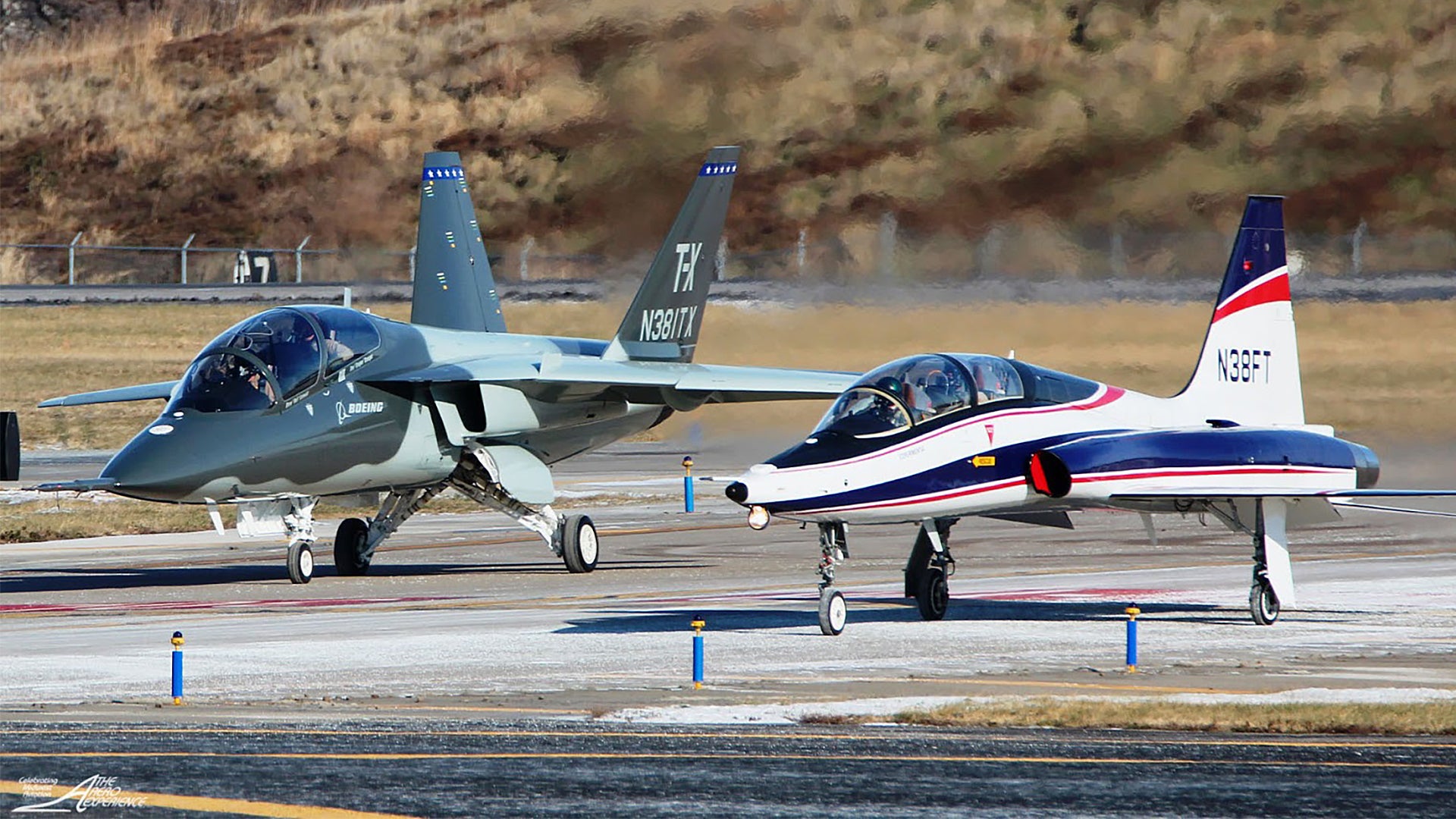What exciting news it was yesterday. After years of waiting, we finally got to hear the USAF’s choice for the jet that would replace the hugely successful, but half-century-old T-38 Talon trainer. But the reality is that Boeing’s victorious T-X design represents so much more than just a new piece of equipment intended to replace another that has reached the end of its service life. This decision has wide-ranging impacts on many different levels, and for Boeing, in particular, it is a game changer.
First off, a huge congratulations to Boeing that has pulled off a trifecta of big aircraft competition wins spanning rotary-wing, fixed-wing unmanned, and now fixed-wing manned aircraft capabilities in just the span of a single month. Also, their competitors, Lockheed and Leonardo, really did put up a great fight and all are super passionate about their products, both of which have already found success globally. But above all else, let’s just take a moment to fathom just how big of a winner Northrop’s iconic T-38 Talon has been.

The design first flew in April of 1959 and has not only successfully trained tens of thousands of pilots, but it also served a stint with the Thunderbirds and has kept U-2 and B-2 aircrews’ and NASA astronauts’ flight hours up. It has also played the role of aggressor as well, a job it still does to this very day for air wings equipped with target-hungry F-22s.
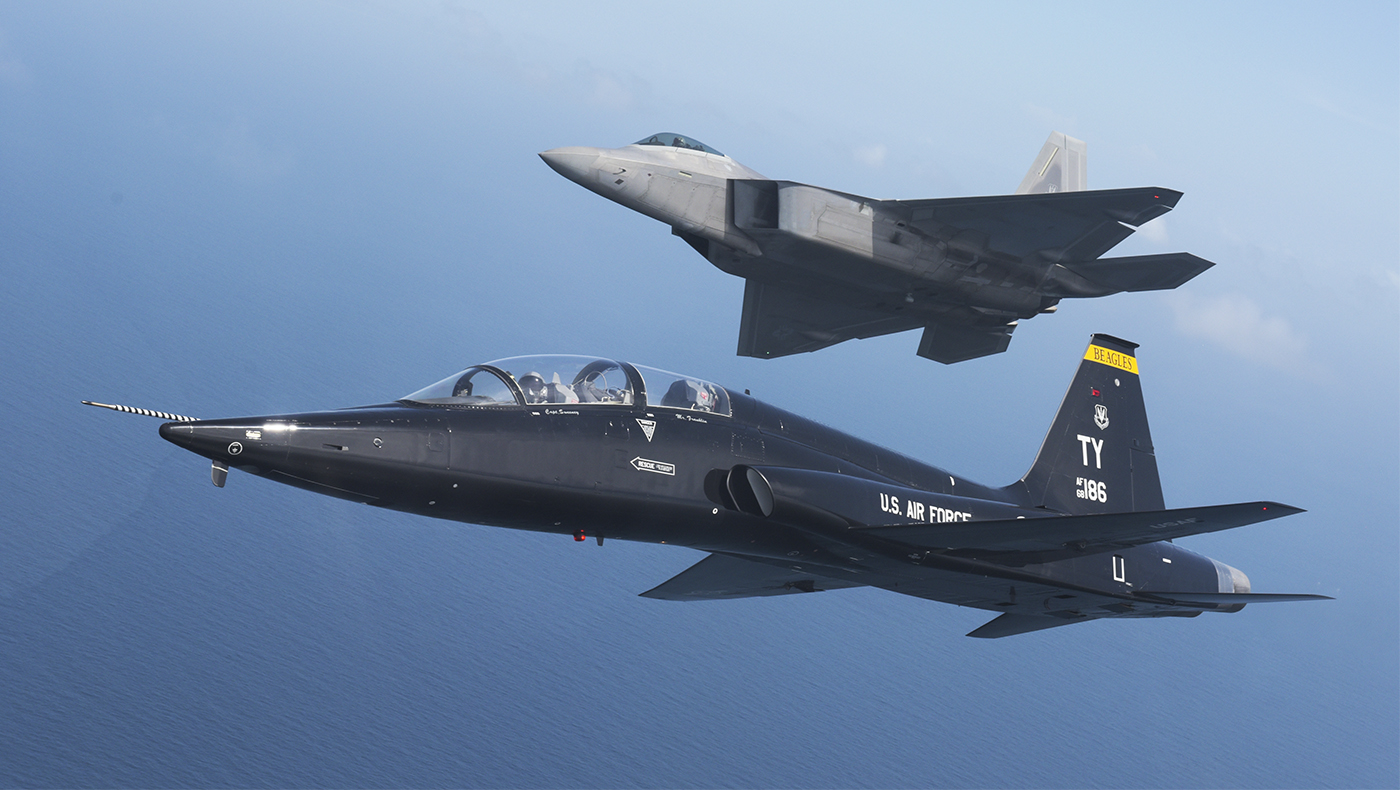
Yet it’s not just what the Talon did, but it’s also what came out of it that is significant. The USAF’s first supersonic jet trainer gave birth to one of the most successful and important families of fighters in history, the F-5A/B Freedom Fighter and F-5E/F Tiger II.
Those jets allowed the U.S. to export American airpower all around the globe, even to less reliable allies and poorer nations who couldn’t afford more complex and capable machines. In addition, for many decades the F-5 served as the backbone of the Navy, Marines, and the USAF adversary support programs, including those involved with the Navy Fighter Weapons School and the USAF Weapons School. In fact, the F-5 continues to provide aggressor capacity for the Navy and Marines till this very day and will also serve in that role for adversary support contractor TacAir, which is just spinning up its F-5 operations now.

The F-5 still flies in a combat role for a handful of air arms around the world. Some of the jets that remain in frontline service are upgraded with modern avionics similar to those you would find on a 4th generation fighter. Even the F-5’s successor, the F-20 Tigershark, was hugely promising, although it never made it to an operational state.
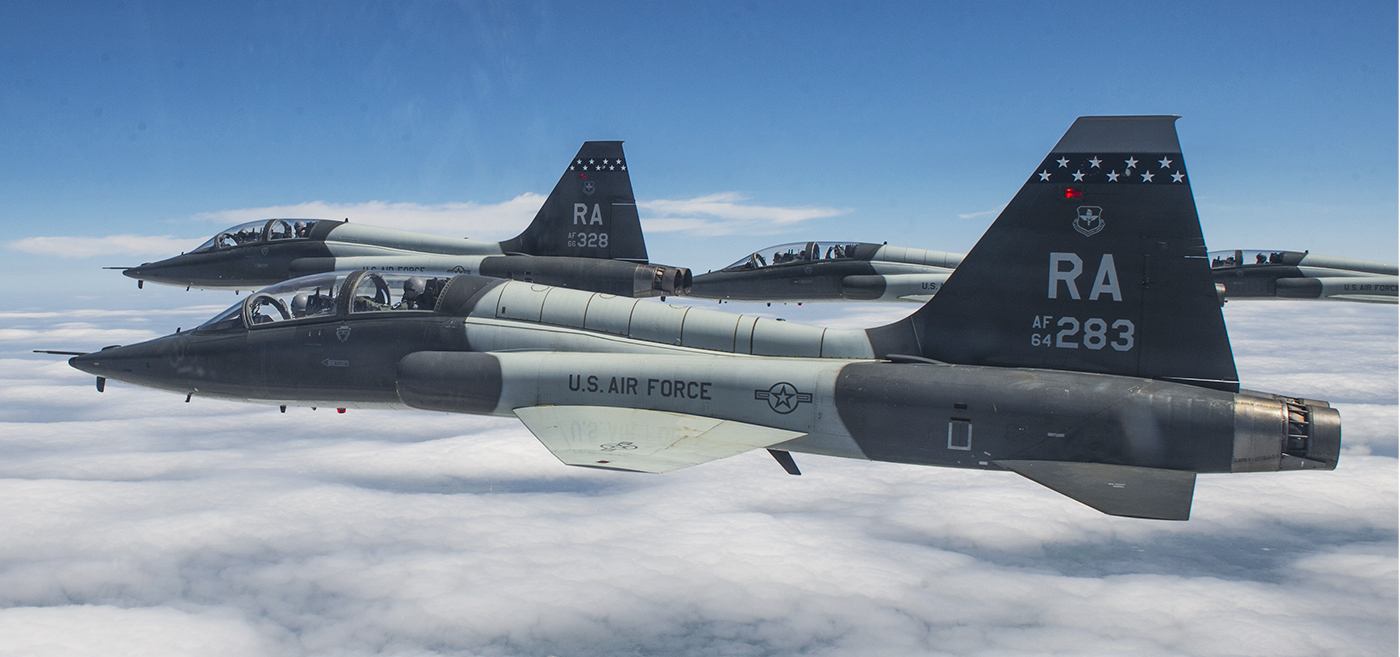
With all this in mind, it is sad that we really never got to know Northrop Grumman’s aborted T-X contender, an aircraft that was designed and built by Scaled Composites and even flew on multiple occasions. With the T-38’s illustrious heritage under Northrop Grumman’s belt, their T-X aircraft, another clear-sheet design dubbed the Model 400, could have been today’s big winner instead of Boeing’s offering. But for various rumored reasons, Northrop Grumman dropped out of the race, in the end ceding the Air Force jet trainer market to a major corporate competitor—Boeing.
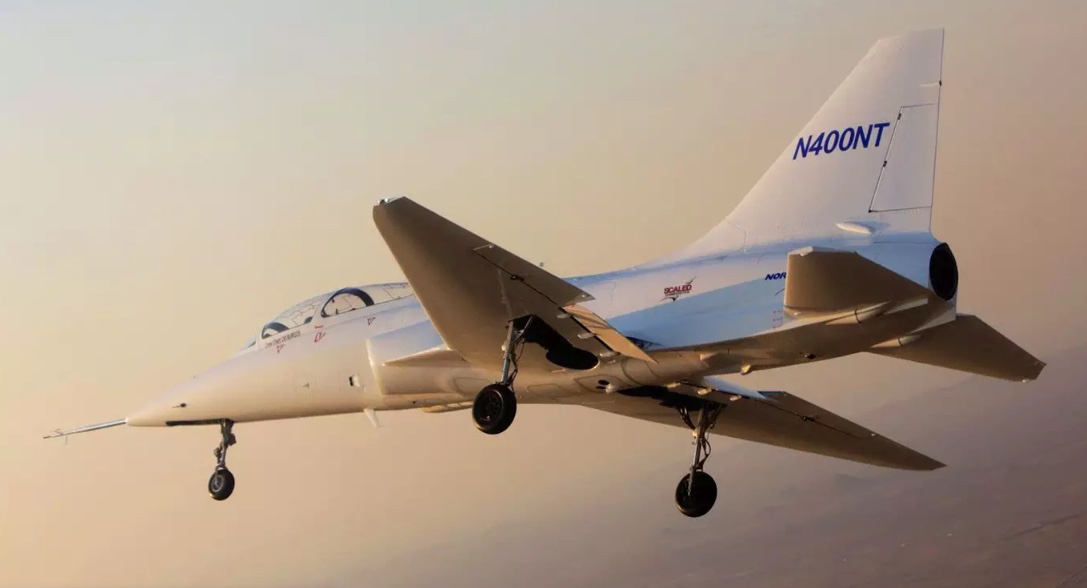
So yeah, Boeing’s T-X has some huge shoes to fill, and doing so will be no easy task. Yet the selection of Boeing to provide this capability means that the storied planemaker will be building tactical jets for decades to come, regardless of what happens to their F-15 and F/A-18 production lines.
Paired with winning the Navy’s MQ-25 tanker drone contract, Boeing’s historic St. Louis plant now has a bright future. And this means that Boeing will remain capable of bidding on future tactical aircraft programs, with the capacity and brain trust intact to remain a serious contender. Just a year or two ago such a situation was very much in doubt.
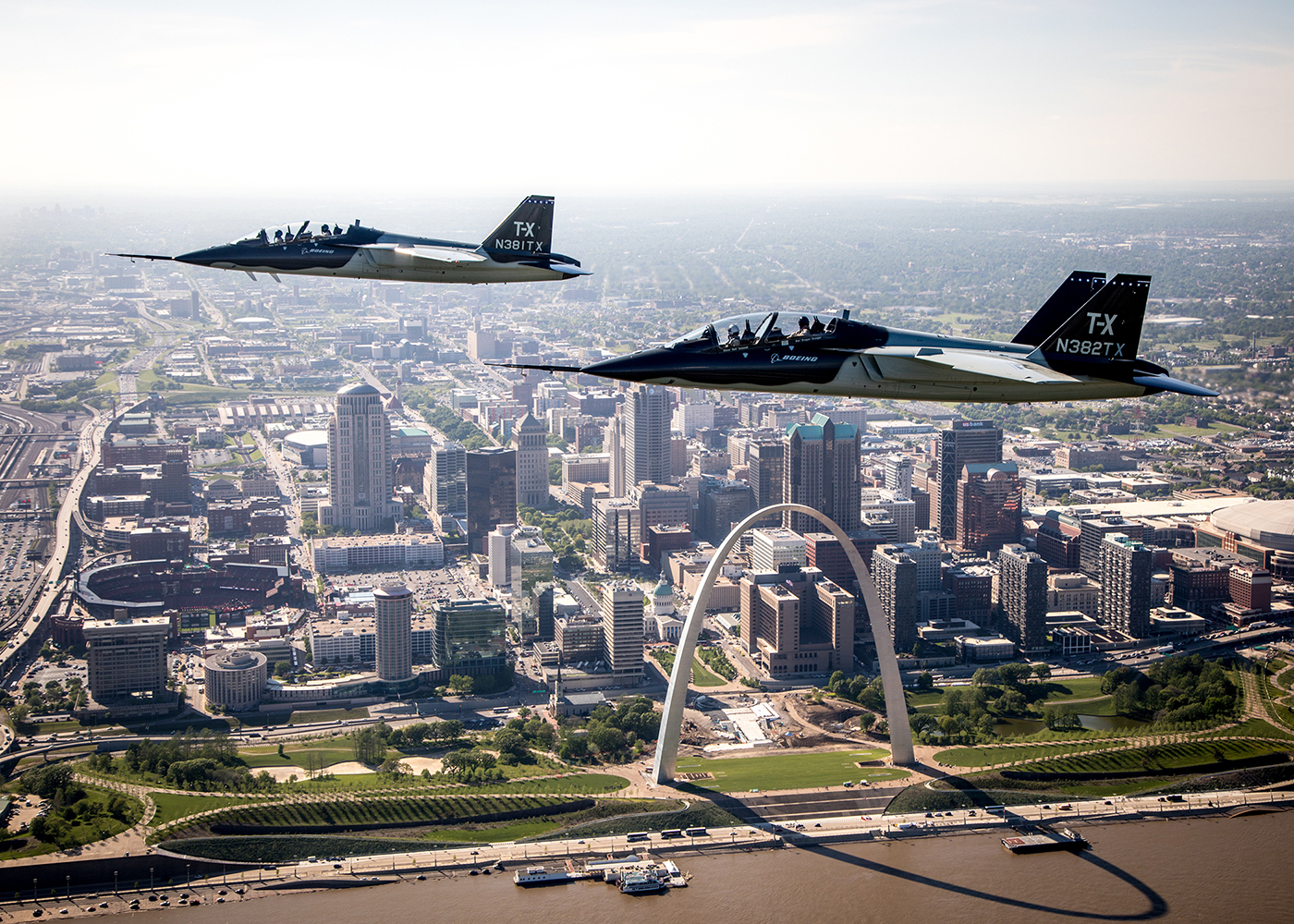
Although the loss may be disappointing for Lockheed Martin, which could have possibly become America’s only tactical jet manufacturer by the latter half of the 2020s, competition is not a bad thing, even for the companies that lose some contracts. And let’s face it, Lockheed has plenty already on its plate right now.
Many indicators point to the possibility that Boeing was super aggressive fiscally speaking with their T-X bid, which is not surprising as they really needed this win. It was literally an existential necessity for the company’s defense arm. The possibility of slim margins and elevated corporate risk for an aggressively bid fixed-price contract like this could put into question its profitability proposition, but winning the T-X is not about short-term profits.
If the T-38 is any indication, this plane will be flying for many decades, likely until a human isn’t really needed in the cockpit for most missions. That means there will be a steady flow of support and development contracts over the life of the fleet. Being the OEM, Boeing has by far the best chance of winning those contracts and in some cases, they will come without competition. And once again, and maybe most importantly, it keeps the company in the tactical jet production game for the long term.
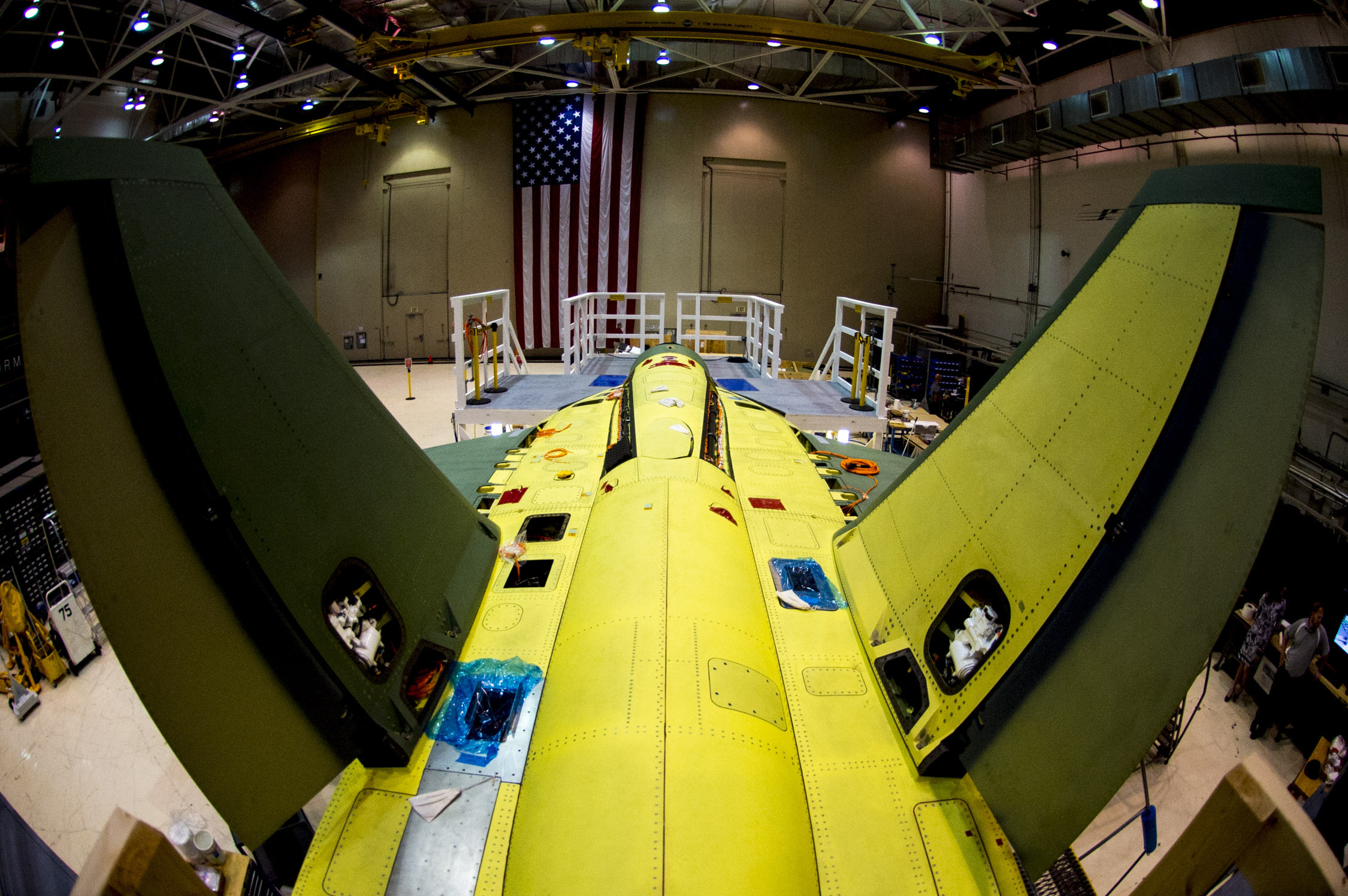
There is also prestige involved here too. Do you know what every USAF fighter pilot minted in the last five decades has in common?
They are all T-38 Talon pilots.
Being able to claim the mantle of providing the platform at the very heart of USAF’s jet combat pilot production is a huge deal that provides unique influence. Boeing’s T-X will become the next generation of USAF fighter pilots’ first jet aircraft they will have ever flown. These men and women will start making their reputation and transform into fighter pilots at its controls. Some of them will even grow to become USAF decision makers. So that first impression can end up being a very powerful and potentially lucrative thing.
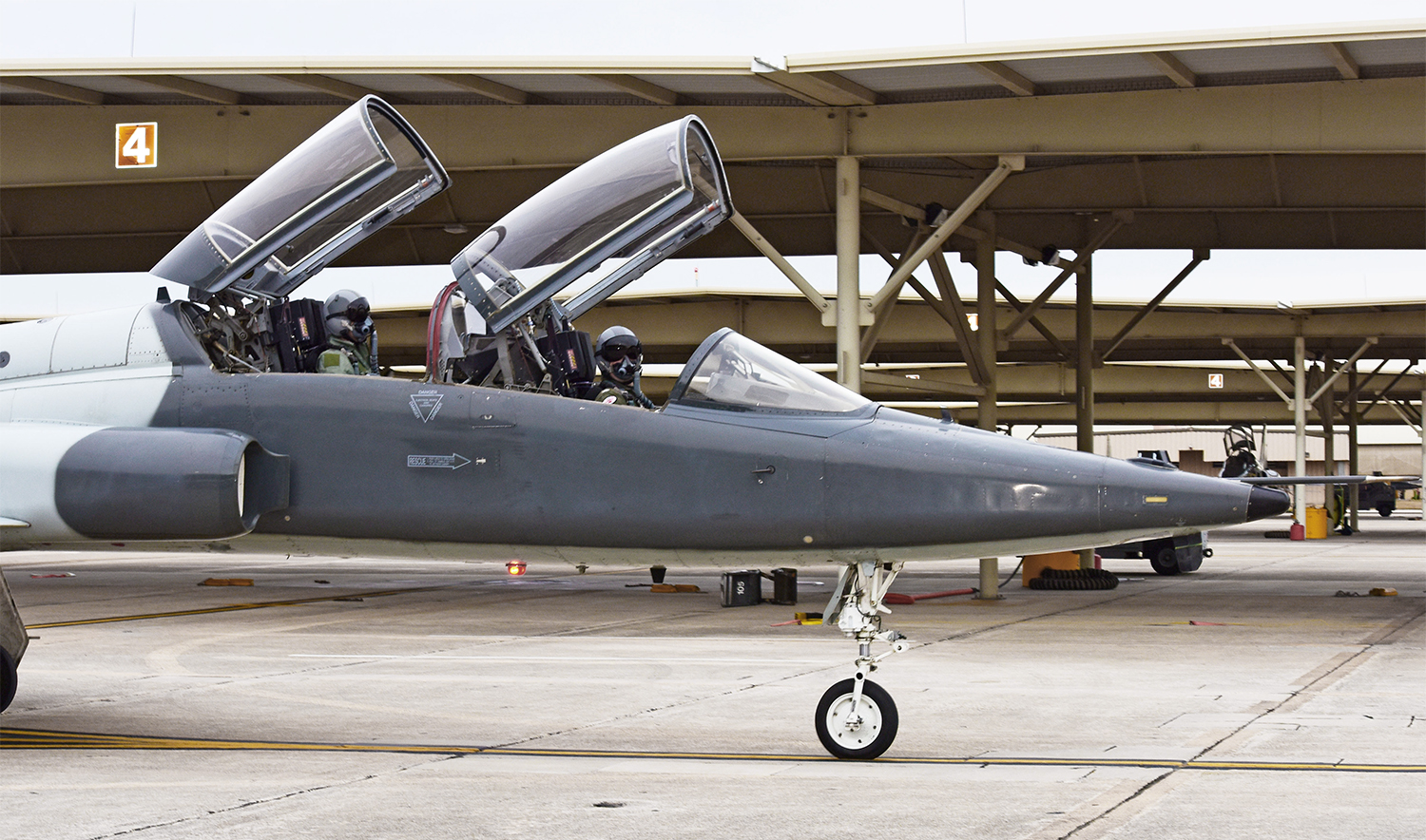
Outside of the Pentagon, on the international jet trainer market, Boeing’s airframe is set to become the latest and greatest airframe to be had, one which the USAF was willing to literally rest its air combat future upon. Plus, foreign air arms looking to buy advanced jet trainers will know that going with the USAF’s pick means they can take advantage of continued development and an expansive and robust logistical support system that will benefit deeply from economies of scale. So we aren’t just talking about the up to 475 trainer jets that the USAF could buy, we are also talking about high export potential as well.
But let’s be honest here, this jet isn’t just a trainer, it’s also a light fighter. In fact, it has the same base powerplant as the F-20—an aircraft that was notorious for its agility and raw performance. When compared to its T-38 predecessor, the thrust difference alone is staggering.
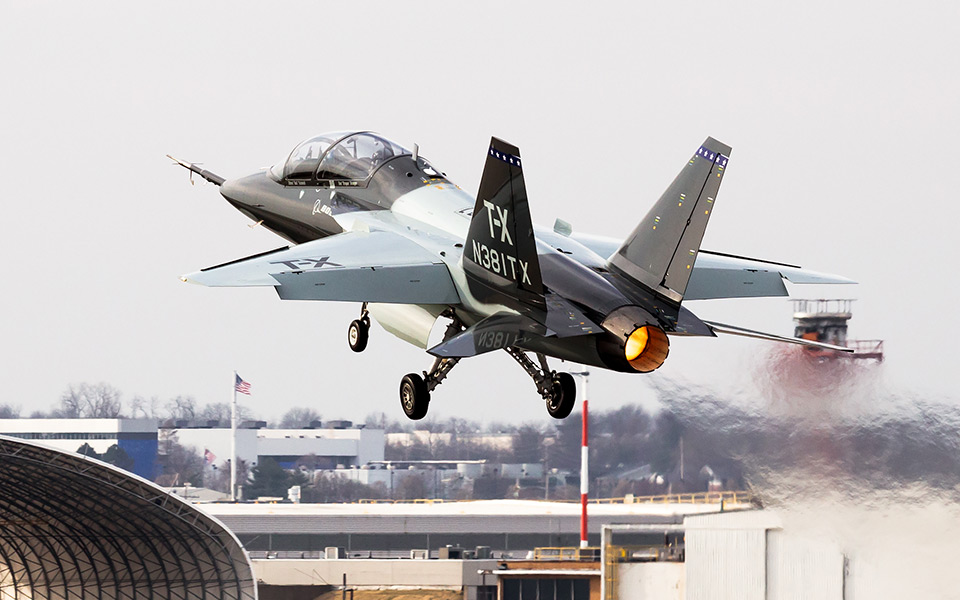
The T-38’s two J85 turbojets provide 5,800lbs of thrust combined. Boeing’s T-X, with its single GE-F404 turbofan, has nearly three times that at roughly 17,200lbs of thrust. The jet also has twin tails, slats, and big leading-edge root extensions (LERXs) that will provide exceptional low-speed handling and general agility. And none of this is surprising as these attributes likely helped when it comes to winning the T-X contract.
The USAF has always eyed the T-X as a potential next-generation aggressor platform, offering somewhere close to F-16’s performance but at far lower operating and acquisition cost. The need for more adversary support has become glaring as 5th generation stealth fighters aren’t challenged by small formations of fighters and flying 5th generation fighters against other 5th generation fighters for basic air-to-air training is massively wasteful and frankly not fiscally sustainable. Private contractors will fulfill a portion of this demand, but the USAF will need to maintain the aggressor units it has today and provide additional capacity in the future, but in a more efficient manner. This is precisely where the T-X will likely come into play.
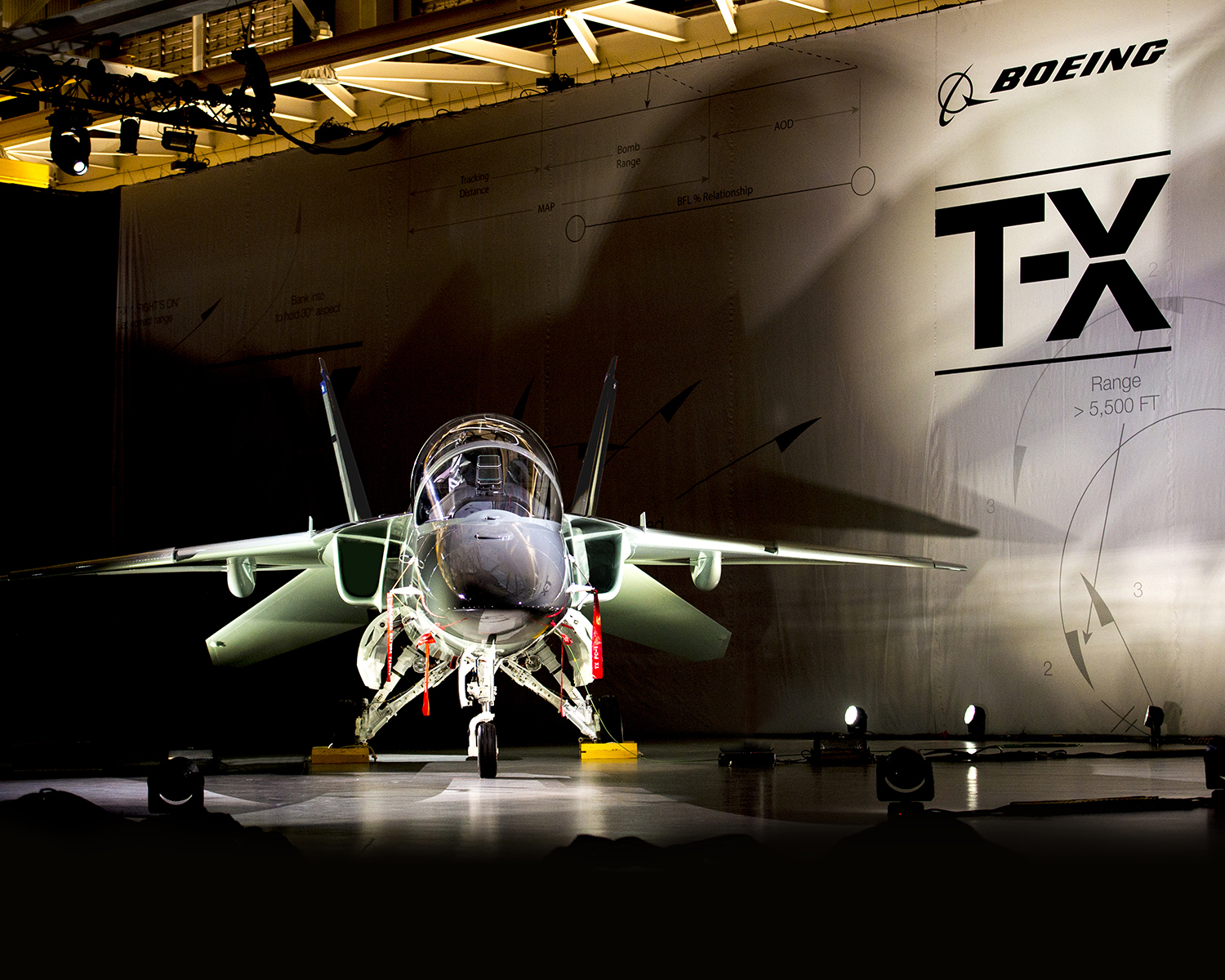
The small size of the T-X will make it a real challenge to spot during within-visual range fights. Based on the design and the amount of thrust it has—as much as a JAS-39 Gripen multi-role fighter—it could turn out to be a very nasty little jet to tangle with. Even the embedded training systems that will be a main staple of the T-X, in general, could help provide expanded realistic air-to-air training at far lower costs than what has been realized in the past. Also, considering it will be able to lug around jamming pods and captive training missiles, it could really fill the role of a 4th generation bad guy nicely without major modifications. But strap on a small AESA radar and an electronic warfare system or infrared search and track—podded or internal—and you don’t only have an incredible aggressor aircraft but also a straight-up affordable light fighter.
The Pentagon has no requirement for a light fighter aircraft today, but in the future one based on Boeing’s T-X could be exported abroad much like the F-5 was decades ago. Lockheed’s T-X entrant, the T-50/T-100, has done just that, with the F-50 and FA-50 version being exported by South Korea’s Korean Aerospace Industries to multiple air arms around the globe.
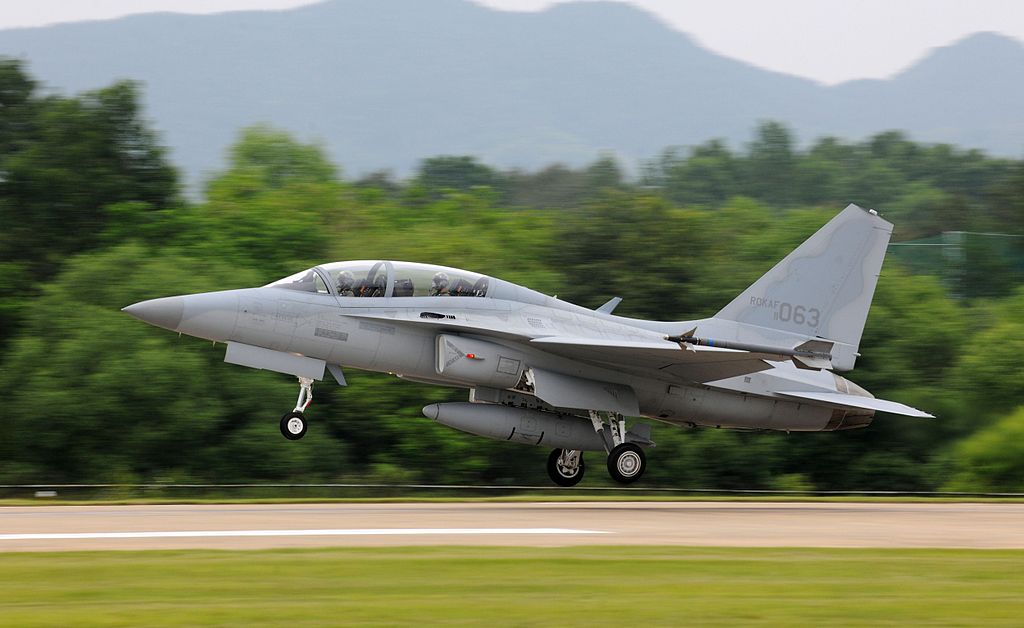
Considering it is more about sensors, communications, and munitions than raw performance and weight-lifting capabilities when it comes to succeeding in most aspects of air combat these days, a fighter version of Boeing’s T-X could offer a lot of capability in a small and relatively cheap package. But most of all, it would have a huge support infrastructure in place that benefits from economies of scale thanks to its trainer cousin.
The U.S. also benefits strategically from having an aircraft like Boeing’s T-X in production. The F-16 has moved to reduced production in South Carolina and it’s not clear just how long that line will remain open. The Eagle and Super Hornet lines could also wind down in the latter half of the next decade. So having a non-stealth, far less complex and costly light tactical jet being produced gives the Pentagon flexibility should it find that such an aircraft, or just a more basic tactical jet capacity in general, is needed sometime in the future.
Even during a time of great tension, a light fighter version of this aircraft could be produced, or even production could be diverted from trainer configurations to combat ones to help back-fill for more capable fighters. This flexibility comes at no cost as a new trainer is needed and will be in production anyway.
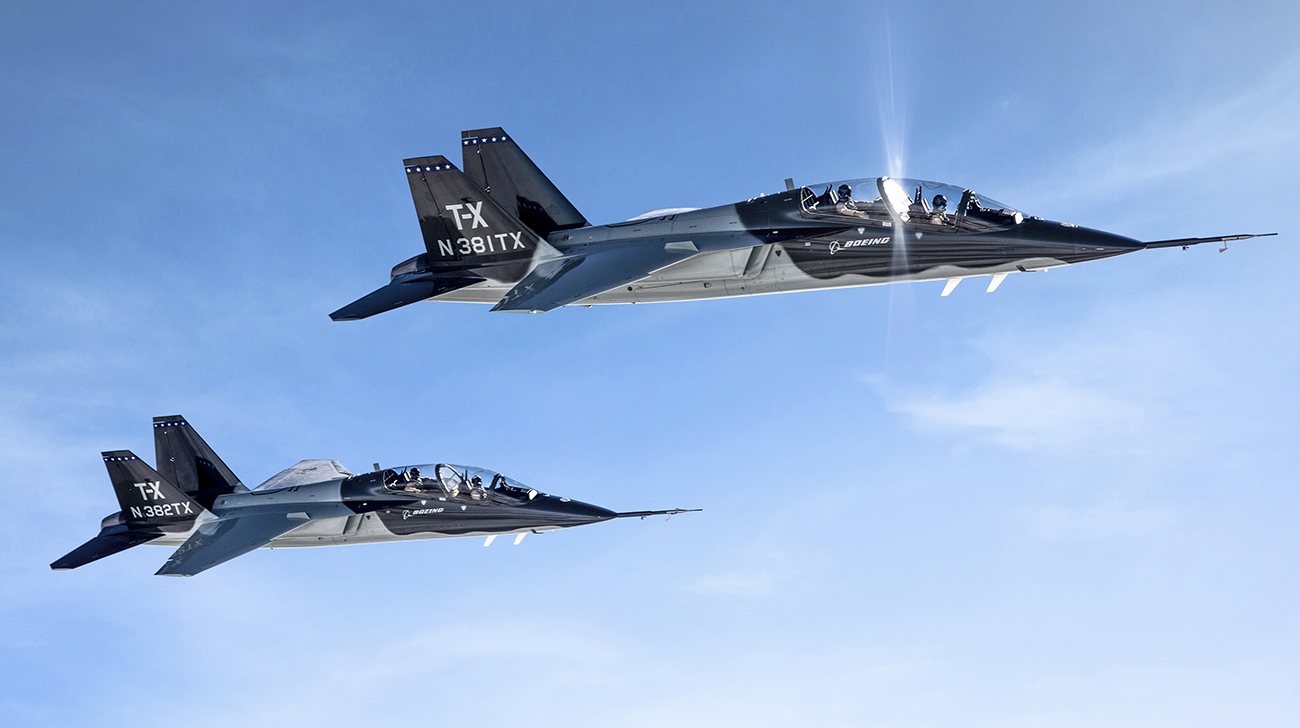
There is also the U.S. Navy and their T-45 Goshawks that are already decades old to consider. The T-45 still has a lot of life ahead of it and some of the fleet is going through a service life extension program now, but the T-45 pales in comparison to the performance of Boeing’s T-X and eventually, the Navy will have to figure out what it will replace the T-45 with.
As it sits now, Boeing seems poised in just about the best position imaginable to provide such an aircraft and I would venture to guess that they designed their T-X entrant at least with some consideration that a navalized version could be required in the future. That aircraft will be unique to the current iteration, but building a new variant of an existing type that is already in widescale use and production is far less expensive than starting from scratch.
Boeing already has an amazing relationship with NAVAIR and knows the carrier-based aviation environment very well, producing the Super Hornet and Growler, as well as the upcoming MQ-25, that fly off of the Navy’s supercarrier decks. They are also the OEM for the T-45 itself after acquiring McDonnell Douglas—the T-45’s original manufacturer—back in 1996. Now consider that Boeing will very likely be building hundreds of USAF trainers in the coming decades and you will come to the conclusion that they would be pretty hard to beat when it comes to potentially building a couple hundred carrier-capable jet trainers for the Navy.

There are also roughly four dozen F-5Ns and F-5Fs that that provide fleet adversary support for the USMC and Navy that won’t last forever either. They are already on their second lives after being retired from the Swiss Air Force. The T-X would be very well suited to take up that role as well and would offer far superior performance over the F-5.
Finally, Boeing’s win breaks Sweden’s SAAB—Boeing’s partner of the T-X design—directly into America’s tactical aircraft universe. If anything, SAAB has proven to be resourceful and innovative, and brings with it a unique operational mindset when it comes to fast jets. SAAB fighters are hardy, ultra-reliable, built to operate with minimal ground support infrastructure and personnel, and relatively inexpensive to fly. This is a very useful viewpoint to bring to the table in an era when the newest American fighters hitting the skies tend to have lower availability rates than those designed in the 1970s. They also rely on heavy infrastructure and long, pristine runways—something that won’t be assured in future conflicts. SAAB’s aircraft are designed with austere airfield operations very much in mind.

I’m not saying that the T-X was designed to meet all of Sweden’s unique needs, but I think SAAB’s unique viewpoint when it comes to air combat and aircraft design is something that is sorely needed here in the United States. By the indications the USAF is giving about future operational demands, many in its highest ranks would probably agree.
Beyond the terms of the deal that the USAF struck with Boeing, their T-X was the only clean-sheet design and thus the newest of the lot. Clearly, the USAF sees a lot of value in the aircraft’s fresh potential and ability to evolve. In essence, the flying force is accepting additional risk in order to benefit from this potential by choosing Boeing’s aircraft over two well-established and far more mature designs.
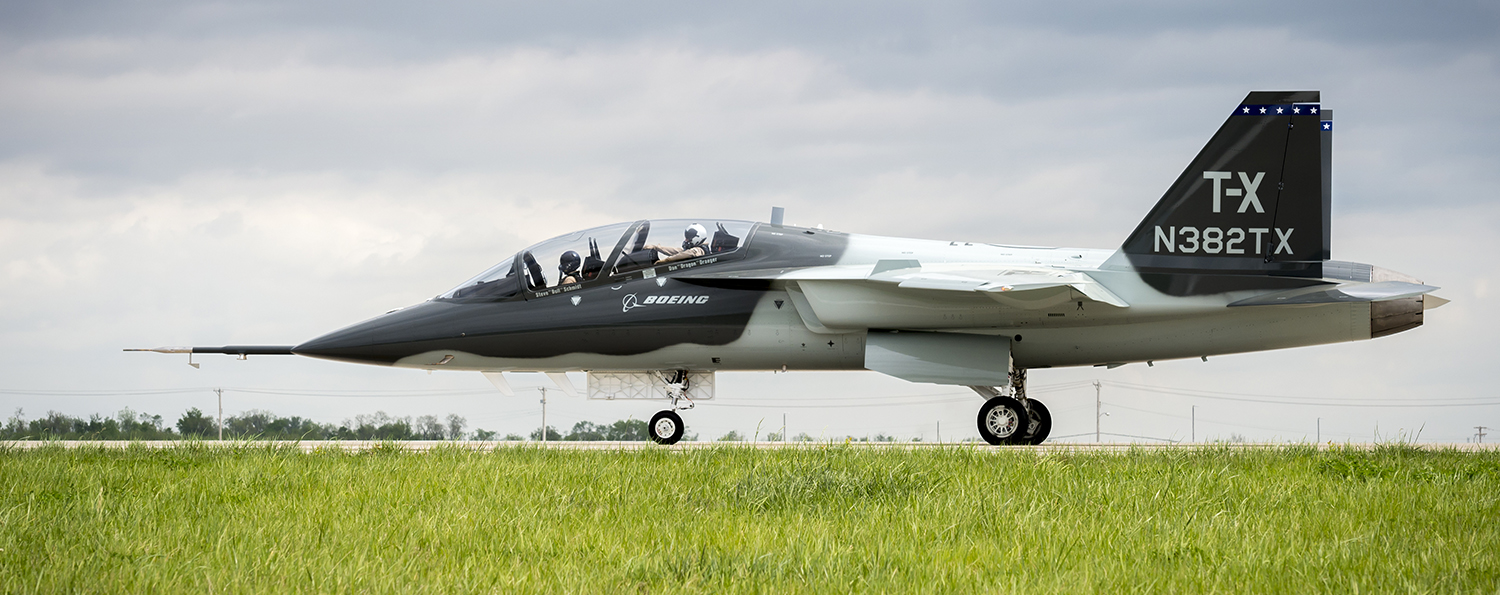
Considering the budgetary realities of the present day, this makes a lot of sense. The USAF can afford to gamble a bit more on their next generation trainer in order to get the best future-proofing available via a totally new, purpose-built design.
But even if defense dollars were more scarce, Boeing’s T-X, as we have established in detail, is more than just a new trainer. The country is better off with a design that is built specifically for the USAF’s unique needs today, while also having the ability to evolve and accomplish other missions for a wide variety of users tomorrow.
We can’t wait to hear more about Boeing’s design, including some raw performance metrics. Stay tuned, once the appeal window closes, Boeing and the USAF should open the information floodgates and allow us to get a far better look at their brand new and incredibly promising jet.
Author’s Note: A huge thanks to The Aero Experience for sharing their awesome image seen at the top of this article with us. Make sure to check out their site here.
Contact the author: Tyler@thedrive.com
